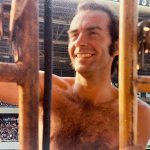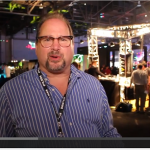
Retrospective of this Technology Through the Author’s Eyes
The color scroller turned 40 last year, with little fanfare. But as I traverse the planet, I can still find these devices utilized in theaters, churches and other installations. I still see the large format products attached to mole-fay blinders on an occasional concert. The advent of LED color mixing fixtures has replaced these once-powerful additions to one’s lighting inventory. I say this in a positive way, as the old color scrollers required a light fixture, a dimmer, power supply and special cables, as well as expensive gel strings to change color on a single fixture. But there is no doubt they were a major force in their time.

The first scroller for changing color was designed by Mariano Fortuny, appearing way back in 1907 at the Kroll Theater in Berlin. Gel as we know it was not devised til 1918, but Fortuny (who also designed the first dimmer and reflector for theatrical lighting instruments) was way ahead of his time. He used colored silk materials to place in front of his lights to change their color. Eventually the designer cut different colored fabrics in triangular shapes and stitched them together. He then attached them to two rollers that he mounted top and bottom of the light, thus the first real scroller came to be.
Back around 1975, a Michigan-based company, Fantasee Lighting, invented the first touring moving light, a mirrored scanner called the Cyklops. This fixture first appeared on a Grand Funk Railroad concert, with Stefan Graf as the LD. His partner, Jim Fackert designed the fixture which included the first automated color changer. This changer was a guillotine type unit, with solenoids driving the six individual gels in the light beam path, in a similar fashion to a manual spotlight.
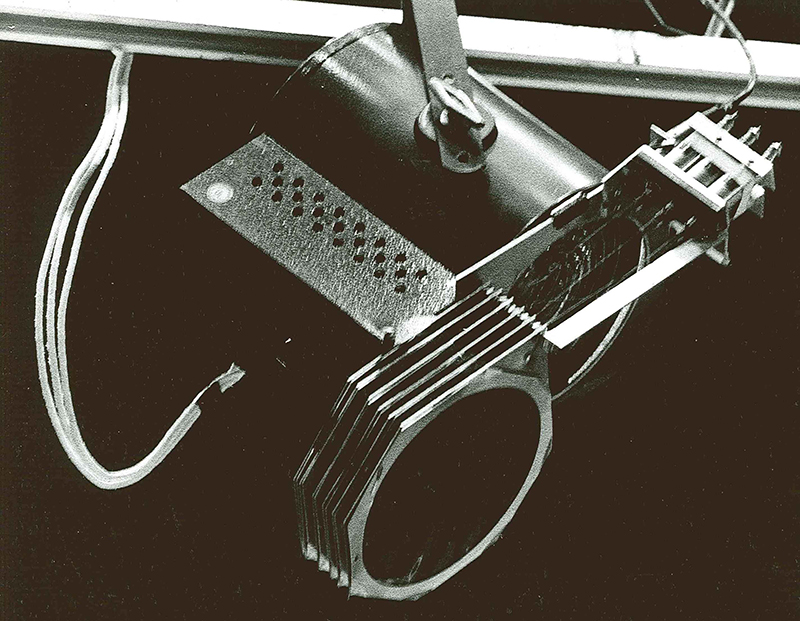
Fantasee figured out a way to add these CX7 Rainbo color changers to Par 64’s, 2k Fresnels and ellipsoidals as the first professional color changers for conventionals appeared. In 1976, the band War toured with a simple unistrut/ladder beam type of truss featuring several of these fixtures. Other companies such as See Factor wound up using this technology on tours with bands such as Blue Öyster Cult. “We just began marketing these for sales when the ‘color scroller’ was introduced and blew us out of the marketplace,” Graf recalls. “We were too early in ‘75 for the digital age — these were analog.”
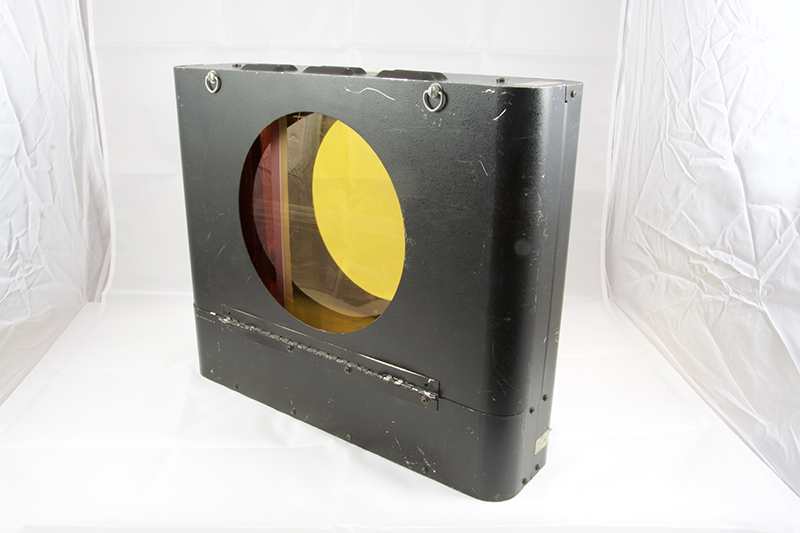
Color scrollers were the first bit of automated lighting with gel strings when they first appeared in 1980 on a Tom Petty tour. They showed up a year before Vari-Lites came out and changed the way most LD’s worked. Lighting techs had to spend extra care on these bits of “technology” to keep them functioning. Often enough, one person on every tour became the color changer tech; the one who gets them all hung, wired, and operating well enough that they will stay working the entire show. That same person often sat at front of house with their dedicated controller and hit cues to change the roll of gel strings to the next desired color.
The word “scroll” stands for a paper or likewise parchment that has been rolled into a cylindrical shape. Particular gel colors were chosen by designers, then taped together with clear, heat resistant tape into a long gel string. They wound tightly on a spring-loaded plastic scroll with an empty scroll on the other side of the light path. A motor would spin the empty scroller until it hit a predesignated stop.
For most of these digital color scrollers, each different colored gel had a little silver tab at the start of each new color that was counted and recognized by a sensor as it slid by, therefore knowing when to stop the string in the proper gel frame. The downside was that a simple gust of wind could blow the gel out of the sensor, making for a trip up on the truss by someone to place the gel back in position.
In the Beginning…
It’s best to start this story from the beginning with the original inventor of the scroller — Keny Whitright. Keny was a Showco employee from 1971 to 1978 as an engineer per se. He designed and built items based on ideas from others.
“In the mid-1970s, Showco’s lighting department started getting passed by with folks preferring models that English companies started touring with,” Whitright says. “The six lamp bar and the first lightweight socopex multicables from Showlites were quickly making their mark on the touring industry. Kirby Wyatt headed up Showco’s lighting department. He felt Showco had to come up with something appealing to all. What he really wanted was a light (Par 64) that could change color and asked us to invent one. But he stipulated three rules he wanted us to follow.” The three rules were:
- They had to change from one color to another with random access (not go through other colors);
- They had to change color in ¼ of a second;
- There had to be at least six colors.
With that in mind, Keny and another employee, Jim Bornhorst, worked on the idea for several years. This included the idea of having six separate motors (solenoids) to instantly release and add color via a spotlight that their competition at Fantasee Lighting had developed. “The gel frame model for the Par 64 was our obstruction. As we made more and more prototypes, they just became too heavy. Then the first one we got to work well ran off of air pressure. But convincing folks to carry air compressors on the road did not go over well. Eventually, we even tried using a model where we could apply voltage to a crystal that would change colors.
“Jim thought of using dichroics with a Marc 350 bulb after seeing a photographic light used to develop prints, but a sheet of this filter the size of a par would cost $1,000 each. That concept nurtured after I had left the company. Finally, I suggested we get rid of “random access” and opt for a gel string.” Eventually, Showco abandoned the idea for a color changing Par altogether. In 1978, Keny left Showco and went out on his own to build the first scroller with gel strings — the ColorMax. The dichroic idea stayed with Jim, eventually turning into the Vari-Lite.
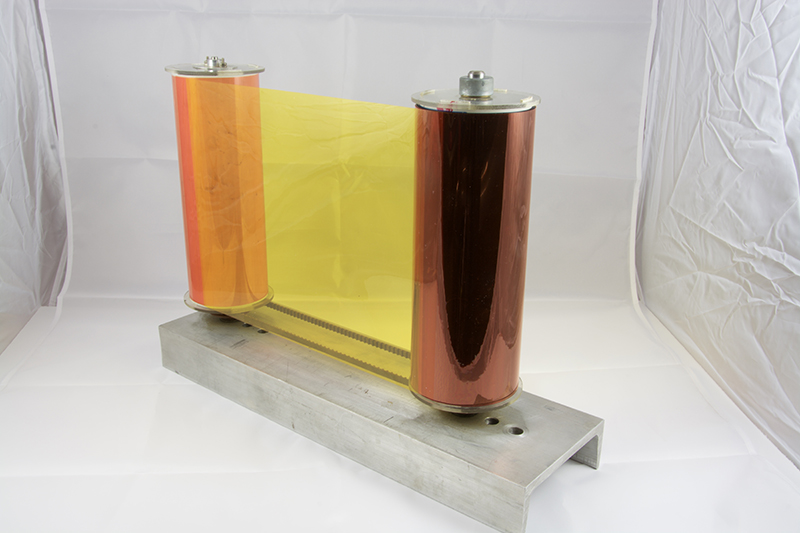
“It was January of 1979 when I started tinkering with the scroller idea and a prototype.” Keny expands. “I had a couple of pieces of Aluminum U-channel, some rollers and circuitry attached to a motor that could digitally move the gels from one position to the next in the string. I spoke with a few people and it was Jim Lenahan — Tom Petty’s LD — who was the first LD willing to give ‘em a try. Dave “Obie” Oberman, Lenahan and Kevin Wall of United Production Services visited me in Dallas in March of 1980. They liked the idea and ordered some. I had 60 to 90 days to take the prototype and build the actual units and deliver them to the tour. I threw six of them in a roadcase with a controller we designed, and they were off. The first units required a digital signal from a controller and a separate AC source. They held 12 colors, including clear.”
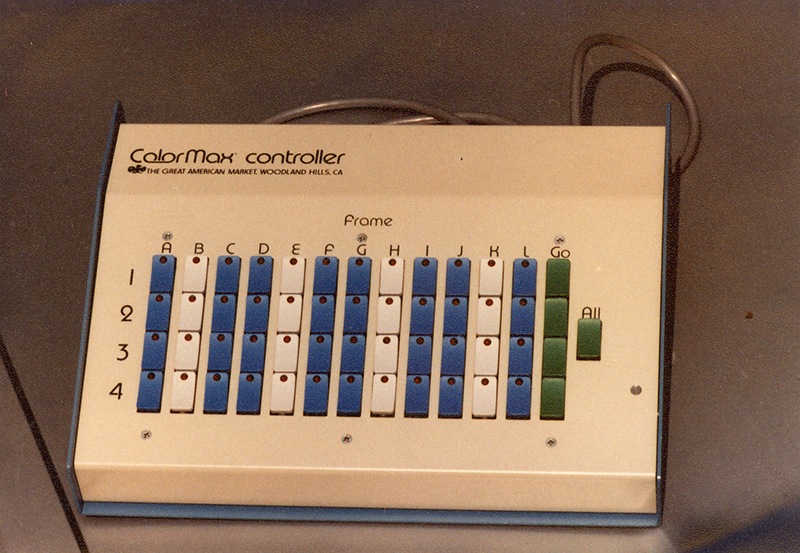
Soon after, Bill McManus, an LD who went on to found McManus Enterprises and PeakBeam Systems, suggested to Whitright that Great American Market (GAM) distribute the units. Keny admits he was just an inventor and had no desire to be a salesman, and thus GAM came up with the name “ColorMax.” Once the deal was sealed, lighting vendors around the world could now own this technology. Several sizes were made over the years, with Whitright eventually calling his company Wybron. Although Wybron ceased production in 2013, Keny still distributes parts to those in need.
Sometime in the 2000’s, Keny got the original ColorMax units back from Obie. Serial number 1 still worked, and Whitright still has the unit.
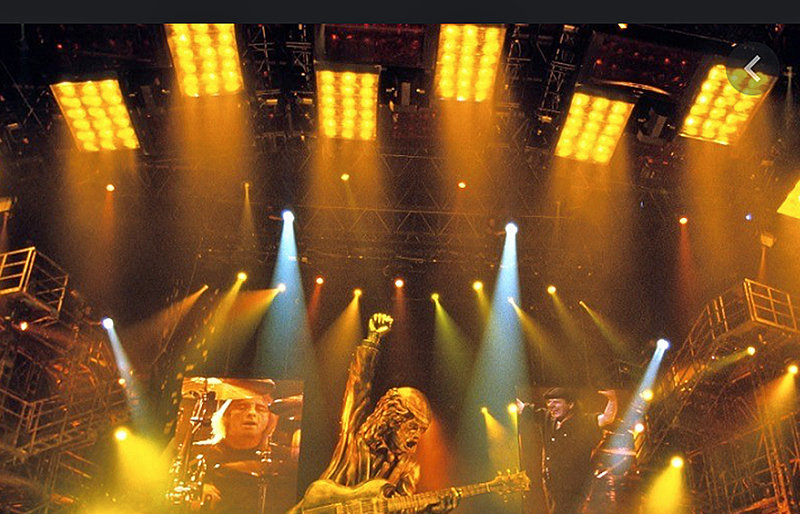
Light and Sound Design mastered the manufacturing of the scroller with their own models in the 1980’s, starting with the Colour Mag, which mounted to pars with fairly good success. But their true claim to fame was the big Mole Mags that were well engineered for heat dispersion and massive amounts of bulbs. Eventually, they had these giant pods called Mega Mags out with the Rolling Stones and other stadium tours.

Around 1988, the Rainbow Colour Changers started showing up on shows, mostly in Europe. Some say they came out of Sweden, but Google tells me they were from Germany. Unlike the digital models with sensors, these were strictly analog. Accepting 0-10 volts DC to control which gel frame to stop at, each scroller plugged into a power supply box that held 12 or 24 units.
Showlites went after the concept of color scrollers in a big way in the mid ‘80’s with their ShowChangers. They had them for pars and 8-liters. They were so content with their models that they designed a Par 64 with the scrollers permanently welded to the end of the par can. The U-shaped models wrapped around the sides of the Par 64s they manufactured; at least one rarely fell off a par. The idea was cool, as was the Alderham controller built into a Halliburton briefcase. Keeping these things working was another story. Most of the evening, the dimmer tech was turning off individual fixtures just long enough for someone to reset the scrollers.
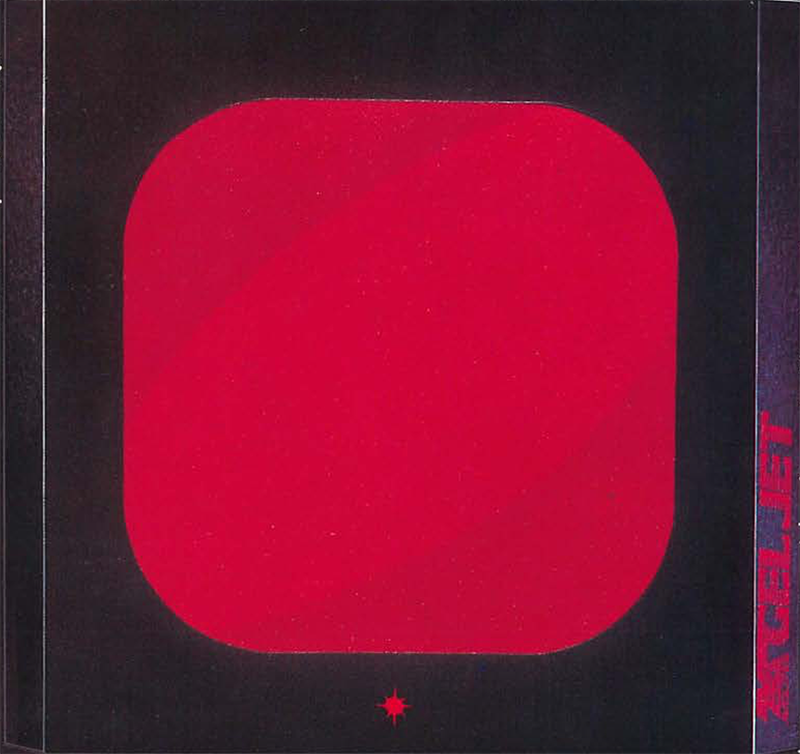
Avolites Gel Jets evolved in the late 1980’s and moved gel faster than any other model, taking two seconds to zip through a dozen frames. Gel Jets could be controlled from 0 to 10 volts and/or digital protocols. Their claim to fame was, “Now every make of lighting console could set Gel Jet color scenes.” The units had different end plates you screwed on to align them with the fixture you wanted to mount them to. They were no bigger than the face of the Par 64 (10” x 10”) it seemed, really thin and lightweight. A multicable ran power and signal cables together to an outboard power supply. They were touchy bits of technology and they made an incredible amount of noise, making a whizzing sound as they zipped from frame to frame. Bands hated that noise during ballads.
Morpheus Lights had their proprietary line of scrollers called the Ranger since the early 1980’s. These were analog models, controlled in the same fashion as a dimmer on 0 to 10 volts feeding DC motors. Programming from any analog console was simple, and there were no sensors for the gel to fall out of. The original models had a rectangular shape for the opening that resembled a TV, looking very odd compared to other models at the time. They all worked every night. Morpheus had moving par cans with these Rangers on them that were fairly unbreakable. Eventually they designed a digital copy of this changer that held more than six colors and had a round output.
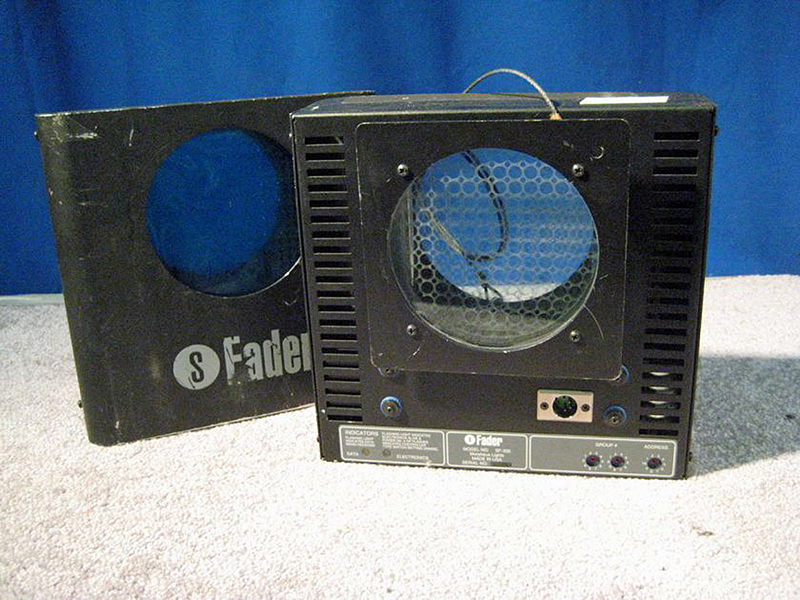
In 1990, the first Color Faders arrived, the first scroller that could color mix with fade times. Peter Morse was the first LD to use this color mixing scroller that had separate cyan, magenta and yellow scrolls. The gels were short and consisted of custom sequentially sized perforated holes in them that allowed different amounts of light through each, thus adjusting the hue. These color changers were rock solid and could fade to any gel color simply by calling up a gel color on their little controller or through DMX values. Their fault was that they cut the light output in half. I found I had to spec two pars with Faders to equal the light output of one par with a Ranger.
Eventually, Wybron and some others built scrollers with more than one scroller, for color mixing. Most users had good luck with these models.
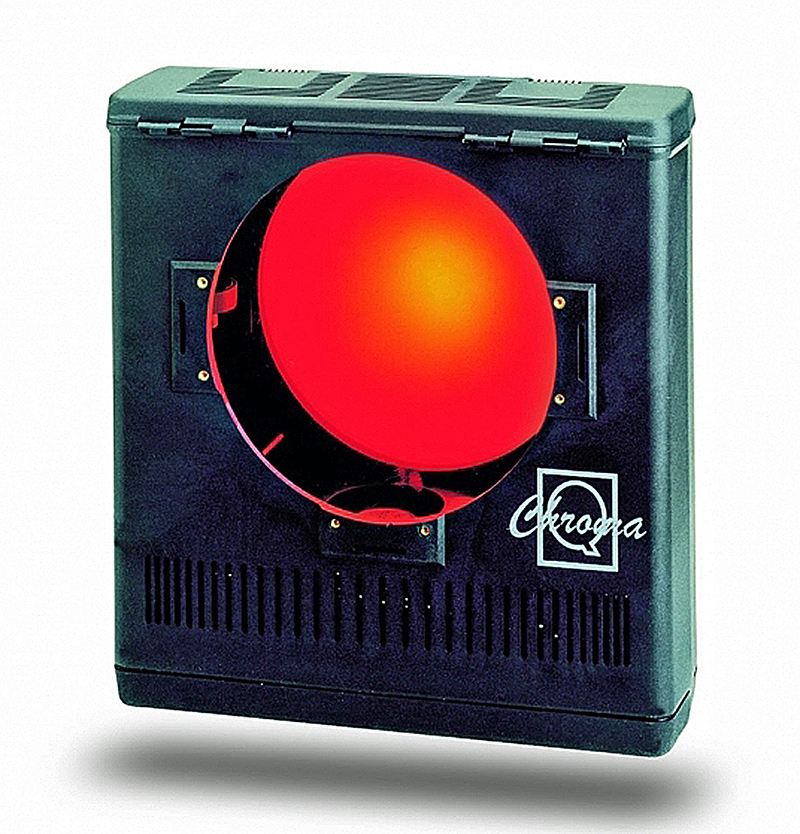
Huntly Christie, founder of Christie Lites, is well known for his penchant for designing his own proprietary gear. In 1993, he started up a side company called Spectrum, which manufactured the ColoRocket scroller. This was an aluminum chassis, analog model. Within a few years Spectrum switched to building the Chroma Q models, which were manufactured using plastic injection molding. They manufactured four different sized models. AC Lighting soon became the worldwide distributor. About 40,000 of their scrollers were manufactured before AC Lighting agreed to acquire Spectrum in Oct. 2002. A Chroma-Q spokesman notes that the company filled an order for 24 new scrollers just last year to augment the lighting rig for a theater that still uses these in house.
The Mega-Scroller
In terms of sheer size, one of the largest color scroller to ever get used for a concert show was a custom unit built for a Phil Collins tour in 1994. Collins had a “rooftop” set that included a scroller that measured 12 feet high by 16 feet wide, with a 150-pound painted drop on it. Wybron built it to designer Morris Lyda’s specs.

Other Notable Color Scrollers
Along with the companies mentioned above, other manufacturers provided LDs with color scrollers, including:
Apollo Design Technology. They fabricated a few versions of scrollers over the years, and they deserve an honorable mention for all the models they’ve made, and for still being in the game.
Robolights manufactured the Colour Scroller, with 11 colors run analog, in the late 1980’s in the U.K.
Compulite’s Whisper line of scrollers covered many fixtures. They built one to fit on an ETC Source Four as well as XL models that fit on 6K HMI units. The fans could be turned off in “whisper” mode via a DMX channel.
DHA made the Light Curtain, a now-antiquated strip light with eight linear bulbs and a motorized tilt. A color scroller was built into the fixture and performed very well for LDs in the 1990’s.
Martin’s Atomic Colors were little scrollers that worked well when screwed onto Martin’s Atomic strobes. Updated models were made when the strobe changed to an LED model.
Morpheus Lights’ mid-1980s Panaspot II made use of four small scrollers internally for its color system. One had gradients of blue ranging from CTB to a dark cyan; one had gradients of magenta; and the third was the “designer’s choice” scroll. The final scroll was made of clear gel and Mylar in intermittent small pieces. It could scroll continuously to emulate a strobe effect.

